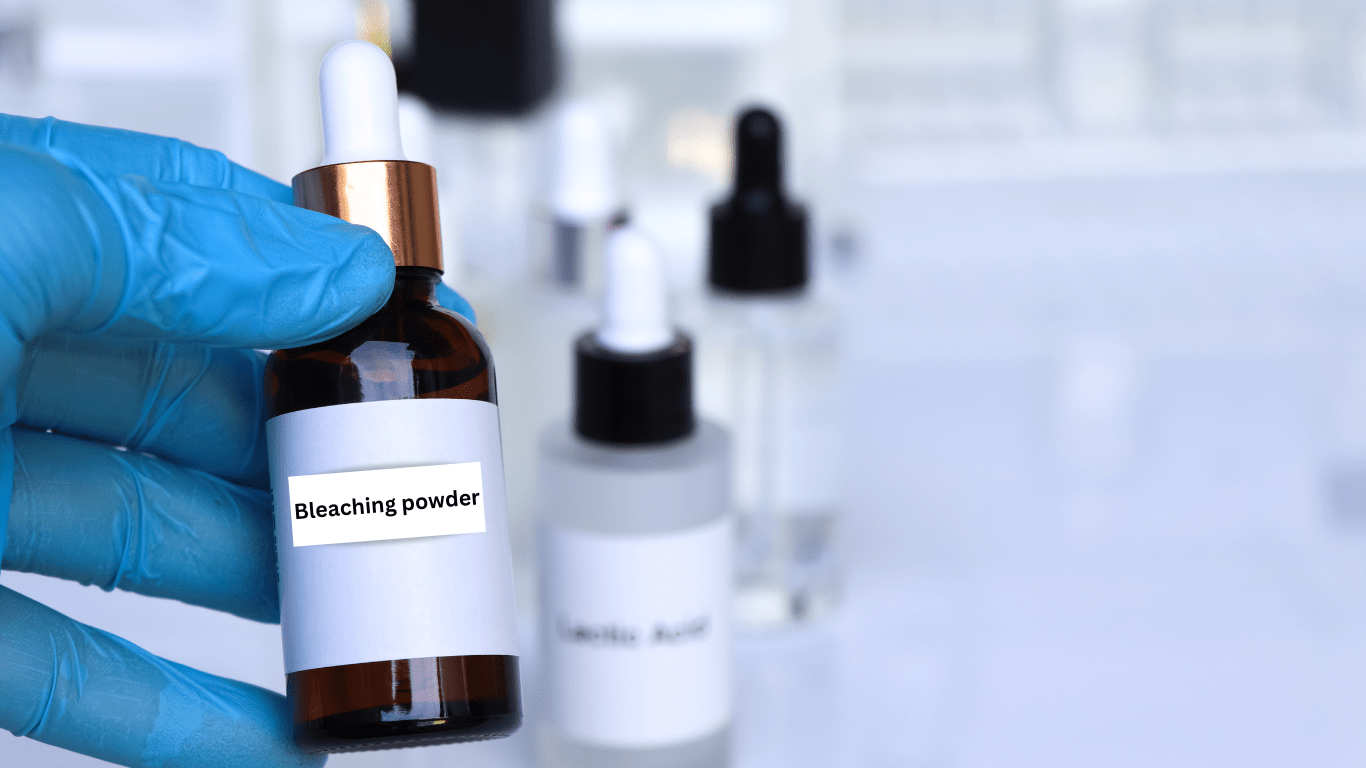Industrial-grade chemicals play a life-saving role in our everyday lives. They help us and make our lives easier in so many different ways. So, today we will discuss one of the most important yet beneficial industrial chemicals, which is bleaching powder. We will learn the meaning of bleaching powder, its various uses, safety precautions, environmental impacts, and conclusions. So, let’s start with the introduction of bleaching powder.
What is bleaching powder?
Bleaching powder resembles baking powder, with a white powder texture and a strong chlorine odor. Bleaching powder is sometimes known as chlorine powder, chlorine of lime, or chlorinated lime. Another common name for bleaching powder is calcium hypochlorite. It can easily dissolve into soft water, which makes it super cleaner on the go! Preparation of a bleaching powder: When chlorine gas is passed through a test tube with dry-hydrated (slaked) lime, then bleaching powder is formed.Applications of Bleaching powder
Textile Industry:
Cotton and linen fabrics turn yellow or become stained over time. Bleaching powder acts like an agent that takes care of the fabric and brings back its original shine. Hypochlorite is a bleaching powder’s active ingredient; once it reacts with water, it causes oxygen release, which acts as a powerful oxidizer, destroying all the colored molecules of stains as well as natural pigments that cause yellowing in cotton and linen.Water treatment:
Bleaching powder is a typical disinfectant used in water treatment plants to purify contaminated water. Bleaching powder when used, releases chlorine, which ultimately kills harmful bacteria present in the water and is also responsible for water-borne diseases like typhoid, cholera, and hepatitis. That’s why using bleaching powder as a disinfectant is a smart move because it guarantees that the water is not harmful for us to drink.Paper factories:
Paper factories use bleaching powder to separate wood pulp. Wood pulp is the main ingredient used to make papers in the industry. It acts as a bleaching agent for wood pulp, and hence it is used in mass paper manufacturing.Sewage treatment:
Sewage treatment systems make extensive use of bleaching powder for cleaning. Hence, this chemical helps to clean waterways and protects public health. It contributes to the disinfection of wastewater before it is released back into the environment, thereby preventing pathogen transmission.Surface Sterilization:
The properties of bleaching powder to kill germs in water make it eligible for use in hospitals, clinics, and other medical environments, which helps prevent the spread of healthcare-associated infections (HAIs).Decomposed organic material:
When organic matter decomposes, it can give off an unpleasant smell; however, this can be prevented by using bleach powder, which decomposes those substances; therefore, the surrounding area remains freshened up, including after using bleach powder to deodorize garbage or when dealing with damp smells in your basement.Washing agent:
Hypochlorite is a special chemical in bleaching powder that produces tiny oxygen particles when it is mixed with water. Very small oxygen particles, which act as if they are very small Pac-Men get formed during bleaching. They eat up stain and yellowing causing colored molecules. Bleaching powder breaks colored molecules, thereby whitening white linen while removing stubborn stains at the same time.Safety Precautions While Handling Bleaching Powder
- Always wear goggles or face shields to protect yourself from splashes. Bleach can cause eye irritation.
- It can harm your respiratory system, so it is suggested that you wear respirators.
- Wear full-covered clothes, along with socks and shoes, in case of spills.
- It is recommended to wear protective chemical aprons for extra body protection.
- Wear rubber or neoprene gloves.
- Keep your doors and windows open while using them in your indoor surroundings.
- If you use a bleach solution as an antiseptic, wait for a minimum of sixty seconds before removing or wiping off the diluted solution. You have to make sure that there is still some visible wetness on its surfaces throughout this time.
- Create a new, diluted bleach solution every day. Bleach solutions become less effective when mixed with water for more than 24 hours.
- Store it in a dry place. Keep it away from metal.
- Do not use it with other products that contain ammonia.


